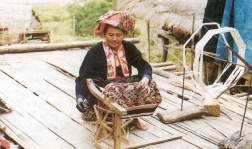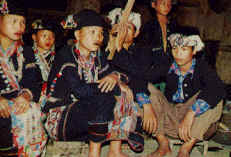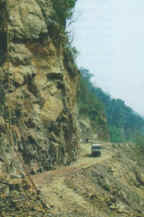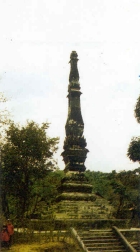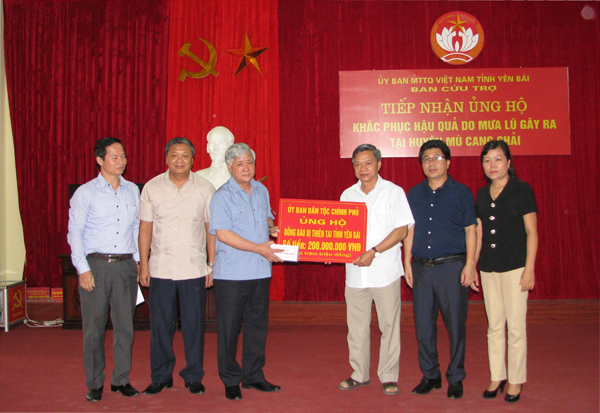The Lao have about 9,600 inhabitants concentrating in Dien Bien and Phong Tho districts of Lai Chau province, Song Ma district of Son La province and Than Uyen district of Lao Cai province. The Lao are also called Lao boc or Lao noi. The Lao language belongs to the Tay-Thai Group. The Lao worship the ancestors and are influenced by Buddhism.
Most of the Lao grow rice in submerged fields using advanced techniques such as ploughing, harrowing and irrigating. Additional family occupations are fairly developed, including brocade weaving, blacksmithing, pottery and silver articlesmaking.
The Lao adopted a sedentary life-style, particularly some villages contain hundreds of houses. The house is spacious and steady with decoration found on principal pole standing near the kitchen and other poles and beams. The roof is high curved at the two ends shaped like tortoise's carapace.
Lao women are well-known for their skills in weaving cloth. They wear black skirt knotted at the front, coming up to their chests, the hems are decorated with two bands of embroidered motifs in different colors, and a short vest close to the body is added with a row of silver buttons which becomes a popular style of women in the Song Ma region. Women in Dien Bien region wear shirt similar to that of the Kho Mu neighbours. Lao unmarried girls always have their hair long tied in a chignon askew on the right of their head. Women also wear a scarf called pieu. When not wearing a scarft, they like to deco- rate their hair with silver pins. They wear a lot of bracelets and it is their habit to tattoo the backs of the hands with images of a plant. Lao men used to have a Han script and an animal tattooed at the wrist and on their thighs respectively.
The Lao often take the family names of Lo, Luong or Vi, each lineage has certain taboos. The children take the family name of the father. Vestiges of the extended families are still seen in some remote areas. The forms of small families are popular. Monogamy is the rule. According to the old custom, after marriage, the groom must live with his wife's family for several years before returning to his home with his wife or 'before the couple can have a private house built. In recent decades, the time for a matrilocate is shortened.
When a person dies, funeral ceremony and burial are carefully organized. Cremation occurs if the deceased is the chief of a muong or a ban (village).
In Lao society, the mo lam (sorcerers) are good at writing and narrating ancient tales or folksongs. They rewrite tales and familiar folksongs. The Lao folkloric legacy is influenced by that of the Thai. The lam vong (Lao folk dance) are always performed at festivals and ceremonies

